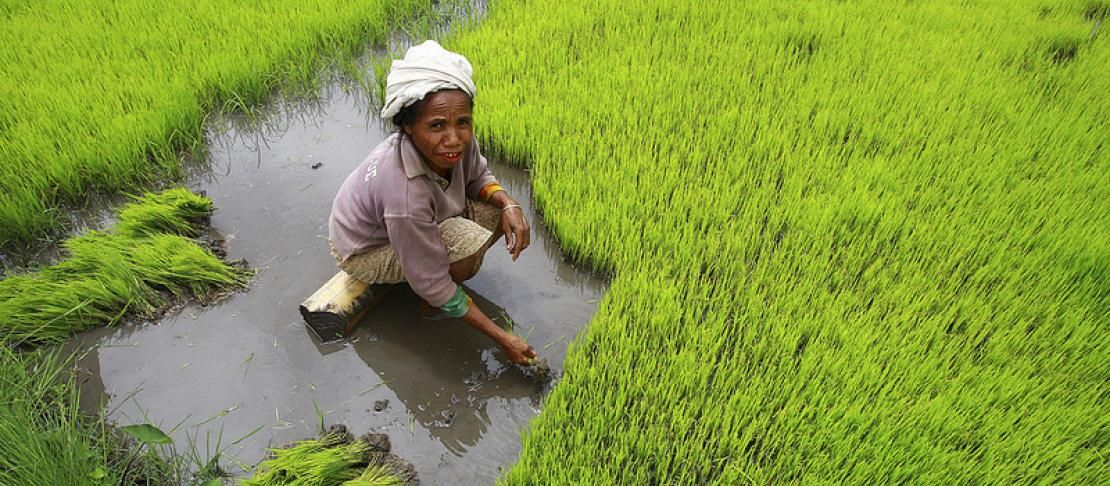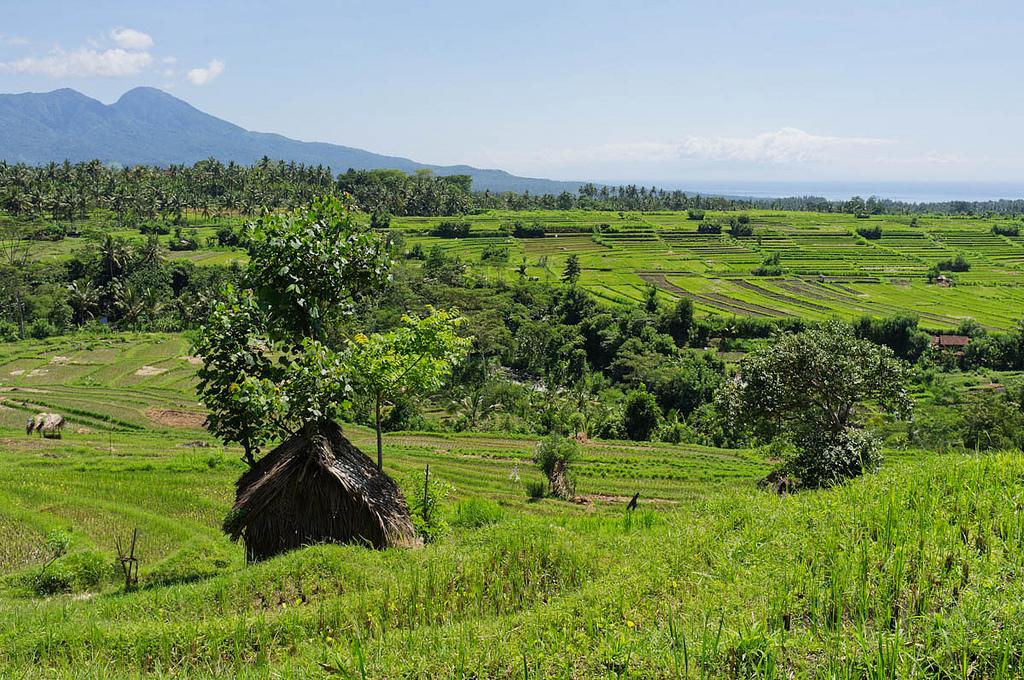Climate-smart road map for global rice powerhouse

A climate-smart road map for Southeast Asia is taking shape as researchers gather in Bangkok Thailand to hammer out an action plan and decide on target sites to explore climate solutions in the region.
The plan, to be shaped by the CGIAR Research Program on Climate Change Agriculture and Food Security (CCAFS), is part of its global initiative to address climate change impacts through climate smart agriculture and policy advice on resilient food systems.
“This is a global program - and without Southeast Asia we can hardly be called a global program,” said Bruce Campbell, leading the convergence meeting in Bangkok to identify a road map with local partners.

Deforestation due to agriculture expansion is considerable in southeast asia. actions curbing this trend while ensuring food security is needed, says CCAFS Director Bruce Campbell.
Photo: Mat Mcdermott
“There are significant food security challenges to be addressed in this region. It is the global powerhouse for rice production and rice-based systems, yet of direct GHG emissions from agriculture, about one tenth come from rice production,” he said.
“This is also a region where there is considerable deforestation from the expansion of agriculture. All these issues need to be addressed,” he added.
The world’s rice bowl
Responsible for churning out the majority of the world’s rice supply, researchers are concerned that climate change impacts such as rising sea levels threaten to engulf the region’s agricultural land and taint freshwater supplies for agricultural production.
Combined with rising salinity, which damages soil fertility and stunts the growth of rice and other crops, they warn that the region’s mega-deltas - the Red River and Mekong Deltas, the Chao Phraya - and the millions who live on them, are at risk.
Despite wide use of irrigation, roughly 75 per cent of crops in the region are rain-fed and remain especially vulnerable to climate variability. Indeed, prolonged dry spells or more intense rainfall has increased pressure on water supplies.
Climate-smart villages
The newest kid on the block, Southeast Asia joins East; West Africa and South Asia among target regions earmarked by CCAFS for climate research focusing on villages where site-specific solutions to climate problems will be investigated.
Learn more about our newcomer: Asia's rice bowls get a new ally in climate fight
The villages to be located in Vietnam, Laos, Cambodia, Myanmar and the Philippines will be “learning laboratories,” where site-specific research will be tested and linked to local strategies so solutions can be scaled up to millions of farmers.
“The villages are learning laboratories where multiple partners - researchers, government agencies, private sector, farmer groups, civil society organisations - come together to trial integrated solutions to climate change,” said Campbell.
The results of meetings in Bangkok will inform the overall strategy of CCAFS - led by the International Center for Tropical Agriculture (CIAT) - with a mandate to promote climate-smart, eco-efficient agricultural systems worldwide - to transform agricultural systems and make them more resilient in the face of climate change.
The pressure will be on partners “to come out with a clear idea as to what the priorities are, and how the research is linked into development and government initiatives that will benefit millions of people,” Campbell added.
Regional buy-in
Dr Leocadio Sebastian, CCAFS Regional Program Leader for Southeast Asia, said: “This workshop will be critical to decide where to position climate-smart villages with as much involvement from regional and local level stakeholders as possible.”
“We want to synergize our activities so that when it comes to climate change adaptation and mitigation work in the region, we can better support the needs of different countries. Our focus is to support local policy change to make policies more flexible and able to respond to gradual changes in the region.
One challenge will be to reduce harmful GHG emissions from massive rice production systems in the region while managing country-level adaptation to the effect of climate change - like sea level rise and climate variability which could force farmers to grow different crops in the future, he said.

partner support in our new research region southeast asia will be crucial to identify which villages to work with and what actions to take, says regional leader Leocadio Sebastian. Photo: AsiaDhrra
“Do you know how difficult it is to ask farmers to change their crop?” he said. “It’s like asking someone to change their career. It’s not something they can do over-night, it will require change in attitudes and acquisition of new knowledge, skills and practices, and links to new markets,” he noted.
Buy-in from local partners at meetings in Bangkok will be crucial to identify where the target villages will be, and what climate change challenges will be tackled in these villages, he added. “Local ownership is very important. Local people need to be part of local solutions,” he said.
Georgina Smith works as a Communications Specialist for the International Center for Tropical Agriculture (CIAT), based in Southeast Asia, Viet Nam. She will be covering CCAFS Southeast Asia planning workshop in Bangkok, Thailand. Follow @Cgiarclimate for updates.
